#breviceps fuscus
Text
Black Rain Frog
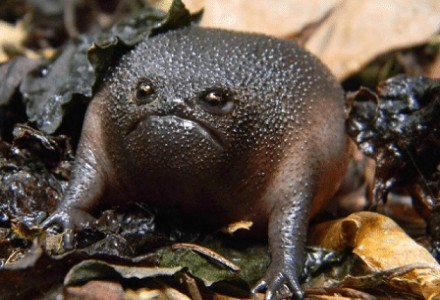
AKA plain rain frog, brown short-headed frog, tsitsikamma frog, Breviceps fuscus
A little avocado...
Rain frogs can look a little silly, like little balls with arms, but they're also very interesting! They spend most of the day burrowed up in soil or leaves, and don't hatch as tadpoles - their babies are already frog-shaped, and called froglets!
Black rain frogs in particular have little inward-facing arms that make them better at burrowing! They're only found within a small region of South Africa, and can be up to 2 inches long.
They live in shrubland, preferably near sand they can burrow up in, and don't like living near open water. They only live their 6-inch-long tunnels at night, in order to hunt and mate. They can also inflate to try to scare off predators, getting up to 7 times as big!!
#frogs#river frogs#black frogs#african frogs#breviceps fuscus#black rain frog#plain rain frog#brown short-headed frog#tsitsikamma frog
33 notes
·
View notes
Note
I read somewhere that rain frogs are mostly muscle, is this true? Extremely curious about their anatomy so I'm wondering if you have any insight as to why/how they are so round!
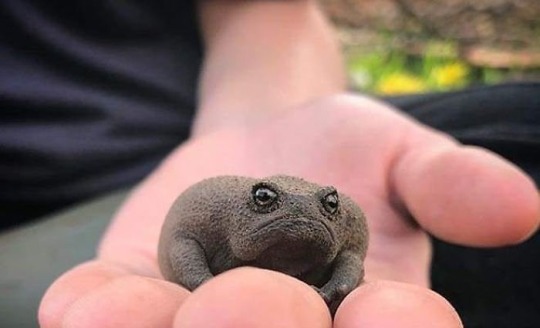
Black Rain Frog (Breviceps fuscus), family Brevicipitidae, endemic to South Africa
photograph by Brittany Raine | Nature ~ Adventure ~ Photography | (@brittle_sees)
~~~~~~~~~~~~~~~~~~~~~~~~~~~~~~~~~~~~~~~~~~~~~~~
Yes, you are correct, Rain Frogs are actually not altogether that fat... they're just shaped like that. They actually do have quite a lot of muscle mass for their size.
Having a round, compact body seems to allow for better, more efficient, burrowing.
You see, that "fat", round body again and again in different groups of burrowing frogs, like many of the Microhylidae and the Spadefoots. This group of frogs does seem to be the ultimate in roundness though!
For a more technical explanation of how they're structured, check out Mark Scherz's recent post about the subject...
The Travelling Taxonomist - Why are rain frogs so round? What's /inside/ of... (tumblr.com)
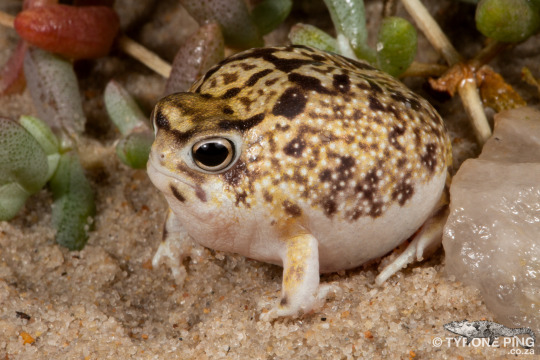
Desert Rain Frog (Breviceps macrops), family Brevicipitidae, South Africa
A few herpetologists are now including rain frogs (and their close relatives) in the family Hemisotidae, as the subfamily Brevicipitinae. I am not, though the 2 families are now considered to be very closely related.
photograph by Tyrone Ping
Tyrone Ping - Exploring Southern African Herpetofauna
967 notes
·
View notes
Note
Which frog is Most Round?
No question, members of the genus Breviceps. They are basically balls of pure muscle. Which species is more challenging. Contenders include

Breviceps mossambicus

B. gibbosus

B. fuscus
and

B. verrucosus
All extremely round.
Note 1: I do not include some of the other Breviceps here, like B. macrops, because they have more distinct heads and larger eyes that break up the roundness.
Note 2: I am defining roundness here as being as near to spherical as possible, not just a circle. If we were going just circular/disclike, there would be many other possible contenders, and Glyphoglossus molossus would be a very possible winner.
All images from iNaturalist, CC-BY-NC [1,2,3,4]
3K notes
·
View notes
Text


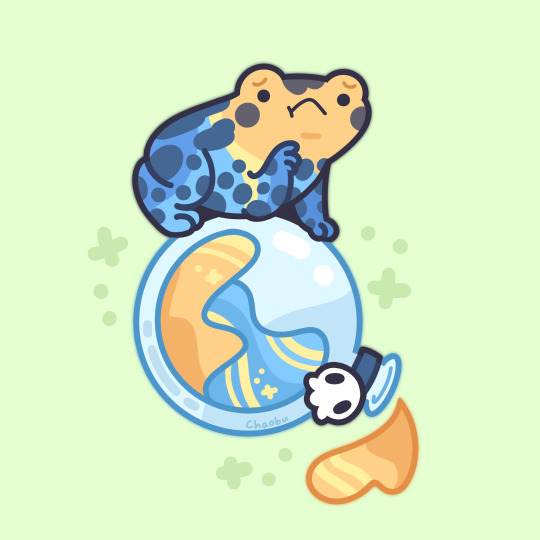




Froggy fall! (part 3/3)
17. Witch's home / Cranwell's horned frog (Ceratophrys cranwelli)
18. Frog’s familiar / Dotted humming frog (Chiasmocleis ventrimaculata)
19. Poison / Mimic poison frog (Ranitomeya imitator)
20. Wand / Australian green tree frog (Ranoidea caerulea)
21. Gold leaf / Black rain frog (Breviceps fuscus)
22. Witch's hat / Strawberry poison frog (Oophaga pumilio)
23. Apple / Red-eyed tree frog (Agalychnis callidryas)
440 notes
·
View notes
Text
Since my blog hasn't been on theme recently I have decided it is time for a frog arc
Breviceps fuscus
(Black Rain Frog)
This lil guy!!
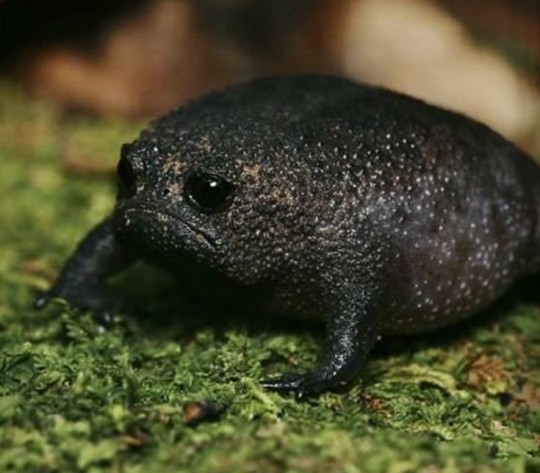
This angry avocado is endemic to the southern coast of South Africa!! Endemic means that it is the only place it could be found! This is a borrowing frog, prefers to avoid water, and is primarily nocturnal!!
16 notes
·
View notes
Text

The African Rain Toad - Breviceps Fuscus
Only found in the South African coast
Unable to hop or swim due to their short, stubby legs
One of their defense mechanisms is that they can puff up their bodies by filling it up with air to intimidate their predators, or to get themselves lodged in their burrow to avoid getting pulled out by snakes
They can kill themselves accidentally by eating a cricket that's too big, which will clog up their intestines
Source: https://en.wikipedia.org/wiki/Breviceps_fuscus
5 notes
·
View notes
Text
I just realized something… My family doesn’t even know my favorite color. They also don’t know about my favorite animal; the black rain frog.
The black rain frog, also known as Breviceps fuscus, is a frog that has to crawl instead of walk. This fucking frog can’t walk, jump, or swim, how is it even a frog at this point? I love them because they look so stupid and grumpy/sad, they are adorable in that way. They eat insects such as termites, flies, crickets, and ants. They also dig up larvae, such as moth larvae, spider larvae, and and other spineless beings, then eat them. The frogs also have bumps on their skin, these bumps are not warts, but are instead something called knobby tubercle. These frogs are really silly and ugly, making them even cuter. They are found in temperate forests in South Africa. The black rain frog is actually really tiny, like a juvenile could fit on a fingertip, so small. I love these little guys so much, I could talk about them forever, AAAAAAAAAAA. I LOVE THEM SM.
I think I’m autism
#Black rain frog#african rain frogs#frog#i made an entire presentation about these#wtf is going on#i cannot#silly#i love them#aaaaaa
2 notes
·
View notes
Text
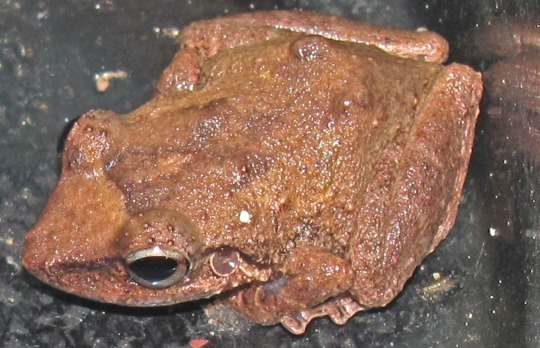
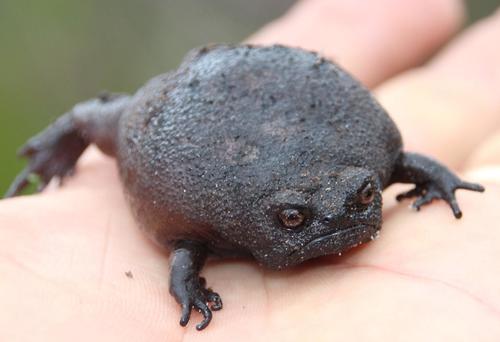
Common Coquí: Named after their call, the common coqui is found in Puerto Rico. This call not only serves to attract a mate, but also to mark territory. A challenging male may enter their territory and begin a duel, where they call for up to several minutes and the first to falter loses. Adults climb higher in the canopy at night and return to the ground when humidity drops in the morning, while juveniles tend to stay closer to the ground. They lay their eggs on leaves in this canopy, where they hatch directly into frogs. Males guard these eggs – although they sometimes eat a few – and chase off any predators.
Black Rain Frog: This frog is found in the forested and mountainous regions of southern South Africa, not relying on nearby sources of water. Instead, it burrows in tunnels up to 150 mm deep or lives low in the foliage of the area. Eggs are laid in similar, shallower burrows, and covered with a few layers of unfertilized eggs for protection. The male also remains near the burrow to guard it from threats, even while continuing to call.
2 notes
·
View notes
Note
Also those are aftican rain frogs! (Scientific name breviceps fuscus)
Some fun facts about them bc I love them they are literally angry avocados
They can’t hop like most frogs, so they do the SILLIEST WADDLE EVER ITS SO F GO KLHGFGJKJG
They are actually nocturnal!
They burrow underground
Because they can’t hop, they can blow themselves up to 7 times their size to scare off predators
They squeak
NJSDKFHJSKFNSJKDHFKSNDFLKJSDFKSJD they are spherical
2 notes
·
View notes
Note
SEARCH UP THE BREVICEPS FUSCUS ITS SO SILLY YOU WILL NOT REGRET IT

Me irl
3 notes
·
View notes
Note
FROG TIME!!
Today’s frog is
🥁🥁brdbrdbrbdbrrbrrbdbrbrbrbdbrbdbrddbbdbrbdbrbdbd🥁🥁
The black rain frog!!

The black rain frog (Breviceps fuscus) also known as; plain rain frog, the brown short-headed frog, and the Tsitsikama rainfrog, is a species of frog endemic to South Africa.
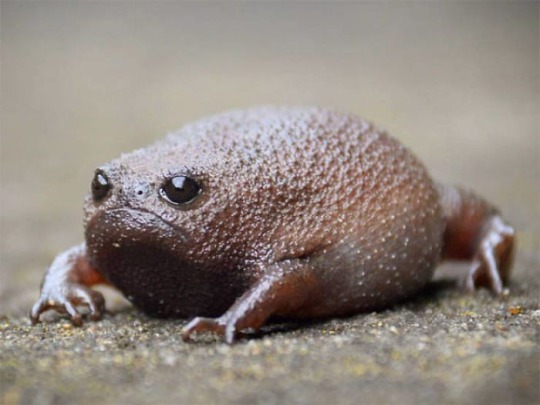
The black rain frog has a snout to vent length of about 40-51 mm (1.5-2 in), colouration is typically dark colours such as brown or black with lighter underbelly.

The black rain frog is only found on the southern slopes of the Cape Fold Belt from Swellendam to the Outeniqua Mountains, they live in elevations of up to over 1,000 m (3,300 ft), the black rain frog usually inhabits small vegetated areas such as, fynbos(a specific stretch of lush vegetation in South Africa), and forest fringes. The black rain frog also does not require presence of open water.

The black rain frog is a burrowing species and they tend to dwell near ‘dislodged sand piles’, due to their burrowing nature.
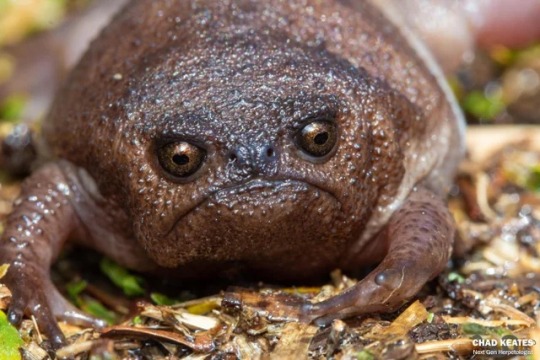
This has been your suprise frog dossier, thank you and goodnight(or whatever time you read this)
Sincerely,
Thē
THANK YOU SO MUCH I ALMOST DELETED THIS OMG THANK GOD I LOOKED I LOVE IT
3 notes
·
View notes
Note
Yes they are they are called black rain frogs (scientific name breviceps fuscus)
Some fun facts!
They’re nocturnal
They can create tunnels up to 6 inches deep
They can blow themselves up to 7 times their size as a defense mechanism
ITS LIKE A SAFE PUFFERFISH I WANTJDIRBMEJR R
I wanna js squish yk
Like a pufferfish+dog+frog
1 note
·
View note
Note
trick or treat
A VERY SPECIAL TREAT FOR A VERY SPECIAL CREATURE:

Black Rain Frog aka Plain Rain Frog (Breviceps fuscus), family Brevicipitidae, Nature's Valley, South Africa
photograph by Tyrone Ping
265 notes
·
View notes
Text
Breviceps fuscus ✨
Follow @uncannyfacts for more!

#frogsofinstagram #facts #sad #uncannyfacts #theuncannyfacts
#frog supremacy#cute frogs#i love frogs#frogs#uncannyfacts#uncannyrajan#factsoftheday#uncannymedia#facts#education#amazing facts#weird facts#true facts
1 note
·
View note
Text
Shiny recolor: Poliwag family. Black refers to x-ray plates, since their swirls are visible intestines. Poliwrath and Politoed colors refers to Breviceps fuscus and Hyalinobatrachium.




0 notes
Text

today's funky frog of the day: the black rain frog (Breviceps fuscus)!!! this little lad is very well-known and loved among frog enthusiasts for their spherical shape and seemingly angry expression. they live in the cape fold belt of south africa.
photo by Christine Ridge-Schnaufer
#black rain frog#frog#funky frog of the day#Breviceps fuscus#sorry this is a bit later today. hectic day for me#this was a reccomendation / suggestion btw#and i am so grateful#i love these guys
3K notes
·
View notes